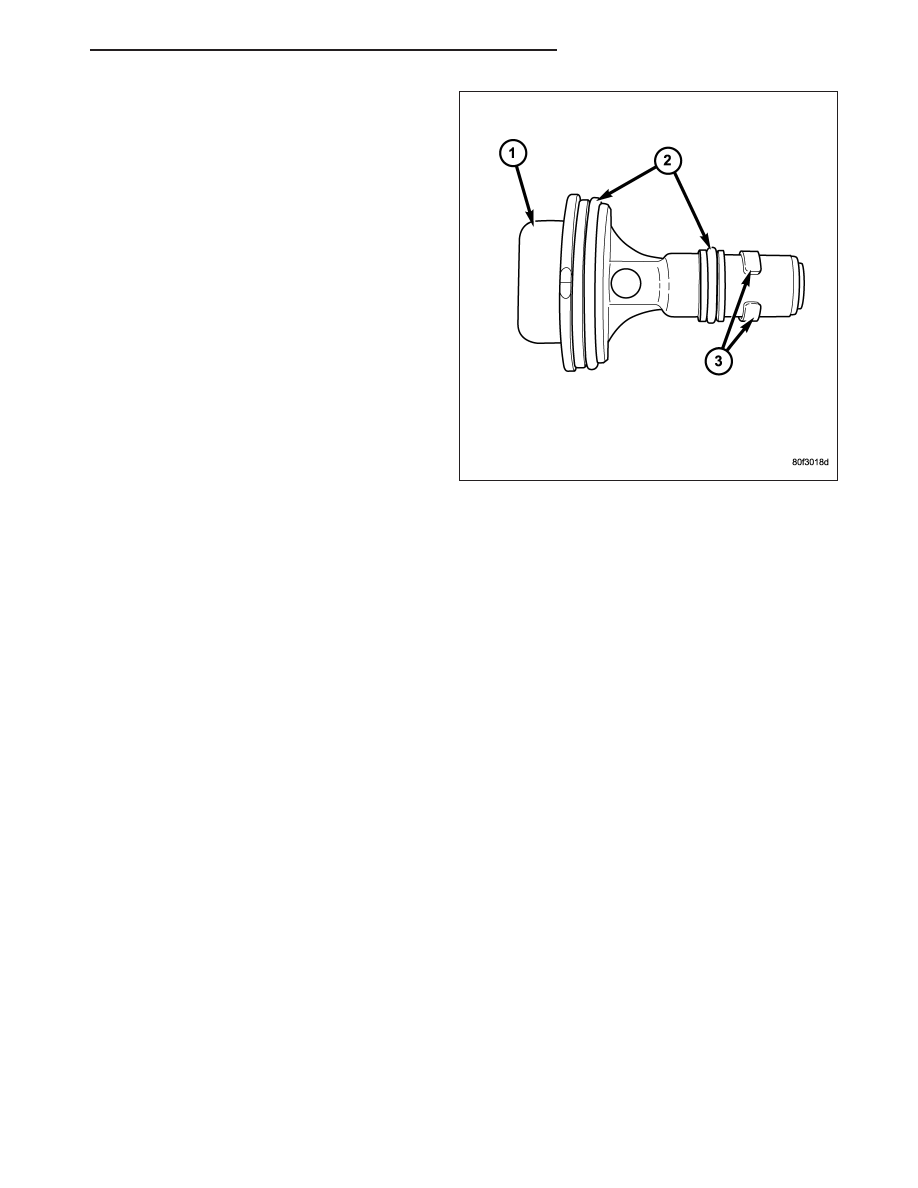Dodge Durango (HB). Manual - part 1580

1. The PCV valve is sealed to the intake manifold with
2 O-rings (2).
2. Remove PCV valve by rotating counter-clockwise
90 degrees until locating tabs (3) have been freed.
After tabs have cleared, pull valve straight up from
intake manifold.
3. After valve is removed, check condition of 2 valve
O-rings (2).
INSTALLATION
3.7L V6 / 4.7L V-8
The PCV valve is located on the oil filler tube. Two locating tabs are located on the side of the valve. These 2 tabs
fit into a cam lock in the oil filler tube. An o-ring seals the valve to the filler tube.
1. Return PCV valve back to oil filler tube by placing valve locating tabs into cam lock. Press PCV valve in and
rotate valve upward. A slight click will be felt when tabs have engaged cam lock. Valve should be pointed
towards rear of vehicle.
2. Connect PCV line/hose and rubber hose to PCV valve.
5.7L V-8
1. Clean out intake manifold opening.
2. Check condition of 2 o-rings on PCV valve.
3. Apply engine oil to 2 o-rings.
4. Place PCV valve into intake manifold and rotate 90 degrees clockwise for installation.
LINES-VACUUM
DESCRIPTION
A vacuum schematic for emission related items can be found on the vehicles VECI label. Refer to Vehicle Emission
Control Information (VECI) Label for label location.
HB
EVAPORATIVE EMISSIONS
25 - 23